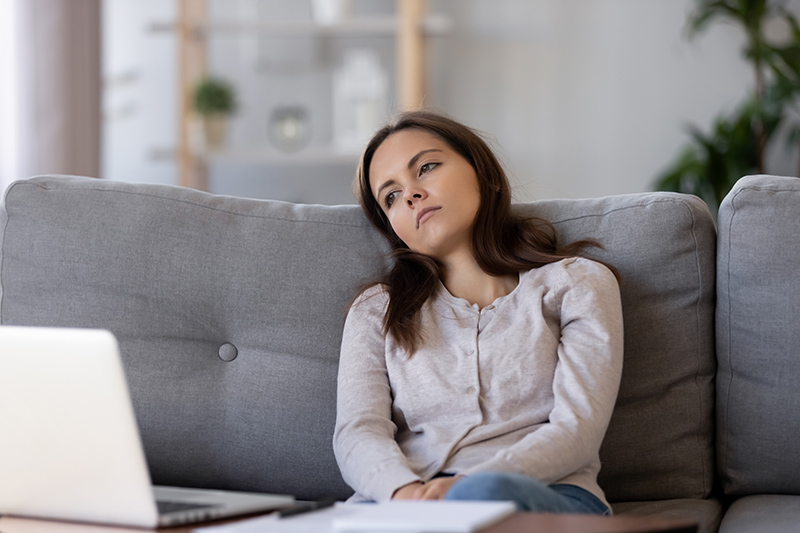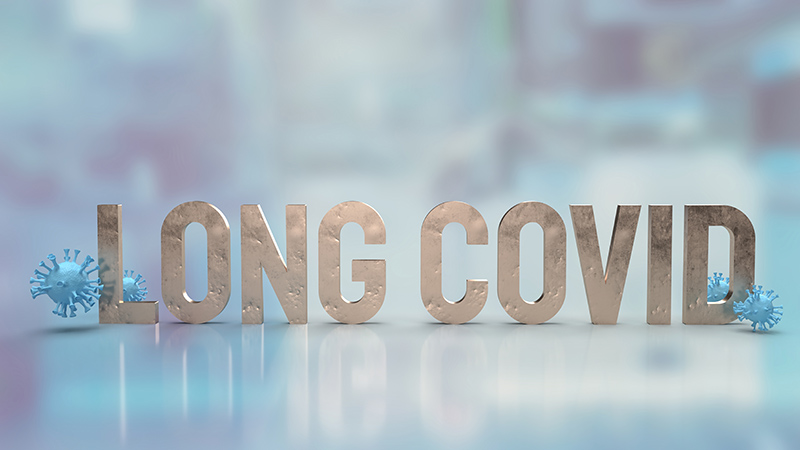Over the last two years, nothing has ruled our lives and occupied our minds as much as the SARS-CoV2 pandemic. If we have not been personally affected yet, we all know someone who has. There is light at the end of the tunnel. One by one, countries are lifting their COVID restrictions to varying degrees and travel across borders has become much easier.
COVID-19 turned out to be a disease that comes in all shapes and sizes. Some people will have contracted SARS-CoV2 without even knowing as they do not develop symptoms. Most people affected experience mild to moderate symptoms, but about 20% get severely ill. Of those, 5% develop critical illness. To date, almost 6 million people have died in connection with this coronavirus, according to the WHO.
Typically, people infected with the virus develop symptoms within four to five days after exposure. If the disease is mild, they recover within seven to ten days. If they get severely or critically ill, it can take three to six weeks to recover.
A minority requires hospitalisation, and the treatment can be long and traumatic. At first, it was thought that those who recovered from acute COVID-19 would simply get on with their lives once they regained their strength. Yet, as the pandemic progressed, it transpired that a significant percentage of people felt below par for weeks or even months after the initial infection.
“Long COVID” or “post-COVID syndrome” is even more multi-faceted than the acute disease itself. For some people, it means that symptoms persist for much longer than usual. Others develop completely new symptoms, and even people whose initial infection went unnoticed can develop long-COVID.
Most long COVID patients will test negative for SARS-CoV2. In other words, the virus has gone, but the patient remains ill.
Long COVID symptoms

In acute COVID-19, people affected often experience flu-like symptoms – with or without fever – cough, sore throat, chest pain, shortness of breath, loss of smell, loss of appetite, headaches, diarrhoea and more. Those suffering from post-COVID syndrome experience such symptoms for much longer than usual, some continuously, some on and off. However, long COVID can also present with a completely new set and a broader range of symptoms, such as fatigue, poor quality of life, joint pain, muscle pain, skin rashes, palpitations, mental health problems, and more.
Post-COVID syndrome can resemble other similarly puzzling diseases, such as postural orthostatic tachycardia syndrome (POTS) or myalgic encephalomyelitis or chronic fatigue syndrome (ME/CFS). Indeed, more than 10% of patients who have had COVID-19 later receive a diagnosis of either POTS or ME/CFS.
Another condition long COVID is reminiscent of is mast cell activation syndrome (MCAS). The SARS-CoV2 virus has been found to trigger inflammatory immune cell responses, including that of mast cells. Patients suffering from MCAS experience frequent episodes of anaphylaxis, i.e., allergic symptoms such as hives, swelling, low blood pressure, difficulty breathing and severe diarrhoea. They also find that they are reacting to more and more things, including foods, over time.
Diagnosis can be tricky
The wide array of symptoms – of which sufferers may have one, two or many – may also distract from the root cause of a patient’s discomfort. Post-COVID syndrome can manifest itself in conditions affecting the lungs or the heart, the nervous or the digestive system.
Many people who contracted SARS-CoV2 remain asymptomatic and never know they had it. Just a couple of weeks after infection, tests come back negative. Not everyone makes antibodies either, and in those who do, their number goes down after recovery from the acute illness. By the time long COVID symptoms develop, antibodies may be completely undetectable. Such circumstances hamper the diagnosis of post-COVID syndrome.
What treatment options are there?
Considering how new and varied the disease is, it is not surprising that for now, treatment options are few and far between. There is as yet no drug that would ease symptoms, let alone cure the illness. As long COVID symptoms resemble those of POTS and ME/CFS, repurposing medications developed to treat those conditions may be helpful in long COVID, too. More research is needed in that area.
At the moment, the most promising treatment seems to be rehabilitation. Light exercise tailored to the patient’s capability, breathing exercises to strengthen the lungs and cognitive behavioural therapy (CBT) over four to six weeks have been shown to improve the condition.
Does exercise help?
Exercise is generally seen as one of the pillars of good health, and it does indeed improve or even prevent a plethora of health conditions. However, in long COVID, a survey found that 86% of participants relapsed following mental or physical activities. Even light exercise as used in rehabilitation may be too much for some sufferers of post-COVID syndrome. A high resting heart rate, high or low blood pressure or low blood oxygen saturation mean that exercise is counter-indicated.
What about nutrition?
For now, research into nutritional therapy for long COVID is scarce. However, just as scientists are hopeful about repurposing pharmaceutical treatments designed to treat POTS and ME/CFS, there is the option of doing the same with the non-pharmaceutical therapies that are used to manage these conditions. As POTS and ME/CFS have been around for longer, research is available about how optimum nutrition can help, and many nutrition professionals are experienced in working with POTS and ME/CFS patients.
In the absence of research specific to post-COVID syndrome, the current advice is to follow a generally healthy diet that reduces inflammation, strengthens the intestinal microflora and supports the immune system. This way of eating is considered to do no harm, and it may actually help.
As long COVID patients can sometimes show MCAS symptoms, it stands to reason that dietary approaches developed for MCAS – e. g. a low histamine diet – may be an option here. Again, there is no research yet to say whether this would work. A low histamine diet is challenging and can be quite restrictive. It should, in any case, only be attempted with the guidance of a nutrition professional.
So, for now, we can only make the most of the (sparse) current treatment options, such as rehabilitation. Eating junk foods and burning the candle at both ends are unlikely to improve long COVID, so a healthy diet, sleep, me-time and relaxation seem like a good place to start. Typically, exercise is part of this list of healthy habits. For long COVID patients, however, it can be counterproductive.
While recovery from post-COVID syndrome can be slow, patients are getting better and the majority make a full recovery.
I have been supporting many people over the last few years who have struggled with energy. My clients get results and have recommended me to friends who have also been struggling with chronic fatigue. That’s great proof that the power of Nutritional Therapy really works.

